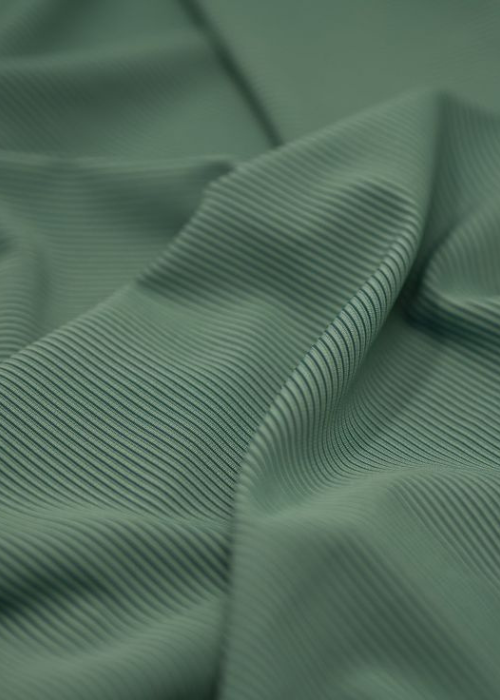Hoodies can be made out of a wide variety of materials. I’ve listed ten popular hoodie fabric varieties below. You could learn about each one’s benefits and drawbacks. Lastly, you may choose which ones are worthwhile investments.
What to consider before customizing your hoodies?
When you purchase or customize hoodies, you’d better consider the following factors.
Durability
Durability should be prioritized when making hoodies. Make sure the cloth is strong enough to endure being worn and repeated washings in washing machines.
Breathability
Breathability is another crucial element. Hoodies should be well-suited to absorbing perspiration if they are to be used for vigorous exercise. And the material ought to be able to absorb sweat. Similar to this, hoodies made to keep you warm in the cold need to be breathable.
Comfort
All forms of clothing must be comfortable. To stay cozy, you must select fabrics that are cozy and irritating-free. It should also allow for uninhibited mobility while balancing warmth and flexibility. If not, wearing it won’t be comfortable.
Warmth
Hoodies for winter must be warm. The cloth is thicker and retains heat better when the GSM is higher. While spring and autumn hoodies only need 250–300gsm, winter hoodies always need 350–400gsm.
10 Types of hoodie materials
There are various sorts and uses for hoodies since different fabrics have varied characteristics.
Cotton

Natural cotton fiber has amazing sweat-absorbing properties and is gentle on the skin. Even during vigorous activity, the substance aids in maintaining the body’s moisture. Wearing it feels secure, cozy, and silky. Because of this, cotton is the fabric of choice for kid’s hoodies.
Cotton is very airy and drapes nicely, making it ideal for casual wear and light summer hoodies. fabric is suitable for constructing winter hoodies since fabric maintains heat well as well.
But after washing, cotton hoodies easily shrink and deform. In order to increase the durability of hoodies, the majority of producers opt to blend it with several additional fibers like polyester.
Polyester

The synthetic fabric polyester is so well-liked for all kinds of clothing. This fabric has exceptional strength and tenacity, and hoodies made of it do not easily fade. They are therefore extremely robust and wrinkle-resistant. Polyester, on the other hand, is resistant to mildew. However, it readily generates static electricity, accumulates dust, and has a poor capacity for absorbing water. Additionally, it has poor breathability and dyeability.
Hoodies are typically not made in garment factories using 100% polyester since the more polyester a garment contains, the more easily it will pill. It is typically blended by manufacturers with other synthetic textiles and natural materials including cotton, silk, and wool. For instance, by adding spandex or lycra to the mixture, you may create a fabric that is incredibly elastic and ideal for hoodies for athletes.
With cotton, the typical ratio is 50% to 60%. The durability of polyester is included in addition to the softness and breathability of cotton. These hoodies are less expensive and difficult to shrink.
Nylon

Nylon is a synthetic fabric with comparable strength, resistance, and resilience to polyester. Furthermore, it has excellent wind resistance, which makes it ideal for a winter hoodie. Nylon has a shiny appearance and offers clothing a wonderful drape. You can use it to create hoodies for wearing to parties. Furthermore, nylon hoodies are particularly waterproof due to its high water resistance.
Please be aware that this cloth readily generates static electricity and has poor ventilation.
Spandex

Stretchable synthetic cloth with considerable flexibility is spandex. It is typically combined with other synthetic or natural fibers rather than being used alone. While combining, it improves the stretch of the fabrics without altering their look. Spandex resists wrinkling and fading well. Hoodies are really comfortable to wear because of how silky and smooth they feel. To make knit materials more durable, many manufacturers combine spandex with them to create hoodies. Usually, a 3% to 5% mixing ratio is used.
Wool

Wool is a fantastic material to use for hoodies in the winter because of its potent thermal properties. Its natural makeup makes it the ideal material for strength, suppleness, and breathability. However, since some individuals are easily allergic to wool, you can choose alpaca wool, which is produced in a way that is hypoallergenic.
Wool is slightly more expensive than cotton. While a cotton hoodie only costs 9–11$, a wool hoodie costs $22. One more thing: Wool shrinks easily. When constructing hoodies, you can add polyester to address this problem.
Rayon

A type of synthetic cloth manufactured from living plants is rayon. It is employed to replicate the texture of different textiles like silk, wool, cotton, and linen. Rayon is smooth and pleasant to the touch and is simple to color. This fabric does not easily pill or generate static electricity, making it a good choice for hoodies. However, rayon lacks toughness, tenacity, and wrinkle resistance. This material works best for constructing cheap hoodies and gym-appropriate sports hoodies.
Jersey

Stretchy knit fabrics like jersey can be created from cotton, wool, or synthetic materials like polyester. There are single and double jerseys in it. The most common hoodie fabric is jersey, which has good softness, resilience, and breathability. It also has lightness and fluidity. The density of the knitting affects how firm it is. It is firmer the higher the density. However, it has a dull finish and is prone to pilling.
A jersey doesn’t cost a lot because of its straightforward production process. Stretchy and breathable, it is frequently used in sportswear and is perfect for active wear. It is also better suited to a tighter-fitting hoodie with a casual and relaxed look due to its good elasticity. Depending on the yarn, jersey fabric works well in both the summer and the winter.
French terry

French terry is a plush and cozy fabric that is often referred to as terry cloth or terry toweling. Typically, cotton or other fabrics are used to make it.
Additionally, it is warm, thick, and breathable. Winter hoodies frequently include French terry fabric. It also has good water absorption and resilience. It is an excellent material to use for creating cozy sports hoodies.
The raw materials for French terry can be chosen based on the styles of hoodies you want. While polyester French terry is less pleasant than cotton French terry, it is more stable and long-lasting. French terry is not difficult to produce, yet the type of fabric used to make it has a significant impact on the cost.
Fleece

One of the most widely used materials for winter hoodies is fleece. It is a knitting fabric that is typically constructed of polyester, making it exceedingly strong and even somewhat waterproof. In addition to being soft and cuddly, it is made with small air pockets that trap body heat to keep people warm. Fleece has good tenacity and is not easily pilled or shed.
Fleece-made hoodies maintain their shape well and don’t easily fade. It is a wonderful option for making jogging or sporting gear when combined with lycra. Please be aware that some fleece may be manufactured of subpar material. So be careful to differentiate between them when making hoodies with it.
Corduroy

A resilient material with a ridged pattern and various widths is corduroy. Any of the main textile fibers could be used to make it. When manufacturing corduroy, for instance, you might include spandex to make the fabric more comfy. Corduroy is warm and breathable, and it is soft and thick. Additionally, it has excellent water absorption, making it ideal for constructing winter and leisure hoodies.
Corduroy is more reasonably priced than fleece. And corduroy hoodies are currently popular. However, this fabric is prone to tearing.
Polyester hoodie vs cotton hoodie
The two most common hoodie materials are polyester and cotton. Both have benefits and drawbacks.
Polyester hoodies are lighter and less likely to shrink or wrinkle than cotton hoodies. Polyester, however, is a synthetic fiber and is less supple and breathable. Wearing 100% polyester hoodies may irritate those with sensitive skin.
When it comes to the cost of raw ingredients, cotton is significantly more expensive than polyester. As a result, you may select the best material for your hoodies based on your budget and the preferences of your target market when you buy or create them.


Leave a comment